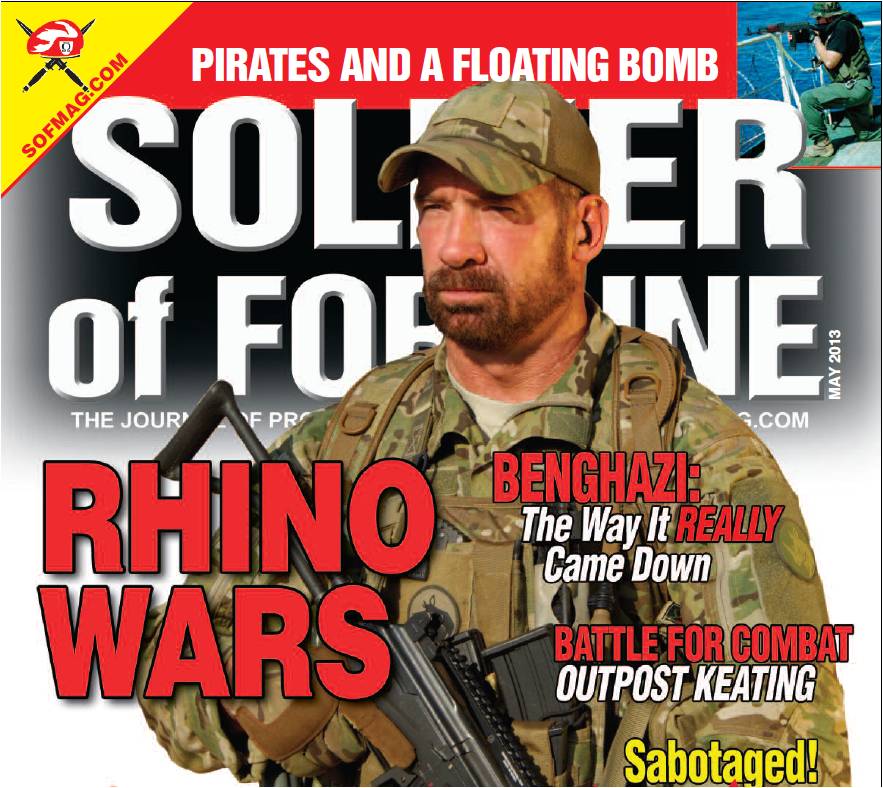Keeping Somali Pirates away from a ‘Floating Bomb’
Source: Soldier of Fortune Magazine featuring V Montgomery
From a mariner safety standpoint, it simply is unacceptable if even one LPG carrier is threatened with an RPG [by pirates]. The “floating bomb” scenario is yet another "good reason for exterminating piracy," writes V. Montgomery.
A yellow dot enters the dark, round field of a radar screen. Its appearance does not go unnoticed in the wheelhouse of the hijacked, commercial fishing boat—now a pirate “mother ship.” The Somali leader of the “pirate attack group”, PAG (the term for an operational raider unit) studies the screen.
After a few minutes, he orders the boat’s hostage crewmen to steer an intercept course with the unidentified ship, still a few dozen nautical miles way on the Indian Ocean.
Minutes pass. Soon, at binocular range, the blip becomes a ship. It is a merchant vessel—not a warship on European Union or NATO counter-piracy patrol. There is no other ship around, no naval escort. Also in the pirates’ favor is that the dark-blue water is relatively calm today, north of Madagascar and east of Kenya.
Assault teams ready themselves on the crowded mother ship’s deck. The pirates stuff fresh wads of khat into their mouths and grab their weapons and boarding gear: narrow, aluminum ladders with hooks on the top, coils of ropes with grappling hooks, and long-handled wire cutters.
These criminals carry Kalashnikov automatic rifles (the folding-stock AKMS variant is easiest to carry, shoulder-slung, during boarding), PKM machine guns, and sometimes RPG-7 anti-tank rocket launchers. Their skiffs—ocean-going motorboats, 20–25 feet long—carry extra cans of fuel for the big outboard motor or pair of motors. Each skiff holds a driver and several heavily armed members of the boarding team.
With the morning sun at their backs, the skiff crews leave the mother ship and navigate toward the target. From a distance of a few miles, the Somalis can see through binoculars that their prey has two huge, rounded tanks half-exposed on its main deck. Soon, they also can see the ship has “LPG” painted in big letters on its side.
But, they don’t care—even if they understand English. All they see are dollar signs.
The successful hijack of a merchant ship can bring a negotiated ransom of several million US dollars, maritime statistics show. However, it also could mean a living hell for the hostage mariners.
Big-dollar ransoms take weeks, if not months, for pirate leaders to negotiate at long distance with the owners and operators of hijacked ships. Meanwhile, hostage civilian crewmen endure deprivation, humiliation and the constant threat of violent death—at the least—and possibly beatings, mock executions and even torture (an international report, The Human Cost of Somali Piracy 2011 [One Earth Foundation/OBP], describes how some Somali-pirate guards hog-tie hostages and tightly wrap cable ties around the helpless men’s testicles—for amusement.)
Playing the odds
Unless these skiff-borne pirates are deterred in the next few minutes by armed guards on the liquid-petroleum gas carrier (LPGC)—and, odds are better than 50/50 the ship has no security—the pirates likely will follow what has become their standing operating procedure: At a range of a few hundred meters they fire machine-gun bursts, maybe even an RPG rocket, in order to force the bigger vessel to halt and allow boarding.
“The attacks are focused on the accommodation. Once within range, a shooter will fire an RPG [rocket] across the vessel’s bow or directly at the accommodation, often aiming at the bridge,” explains Coping with Capture: Hostage Handbook on Somali Pirates, published in 2012 by the Danish Maritime Officers. “This is done to intimidate and make the vessel slow down or stop, in order to allow boarding. In the case of highly flammable cargo, this initial assault procedure may be enough to make the vessel surrender.”
The accuracy of the weapons’ fire, from small boats pursuing a moving target on the ocean, is questionable. The fact that any one of the few dozen LPGCs in transit off the east coast of Africa might be carrying several million pounds of pressurized propane and/or butane seems to be irrele-vant to pirates. They will fire RPG-7 rockets at a ship with the markings “LPG,” according to maritime-security accounts from the high risk area for Somali piracy.
The HRA (high-risk area) comprises much of the Indian Ocean, Gulf of Aden, Arabian Sea and Gulf of Oman. Fortunately, no LPGC in those waters ever has been destroyed or seriously damaged by a Somali pirate attack. Only one ever has been hijacked.
The full article will appear in Soldier of Fortune magazine online - www.sofmag.com - later this month, or the hard copy May 2013 edition on newsstands at the beginning of April 2013.
 Subscribe to our newsletter. Receive a weekly round-up of all piracy-related news.
Subscribe to our newsletter. Receive a weekly round-up of all piracy-related news.
OCEANUSLive.org
Information, Security, Safety; Shared
Submitted by Team@oceanuslive.org